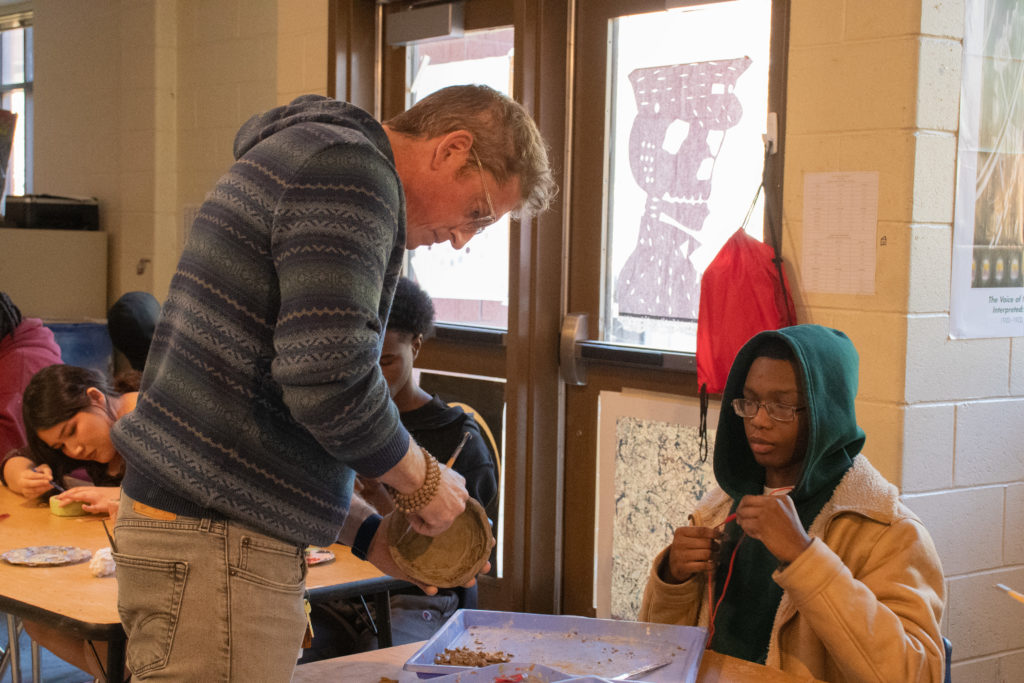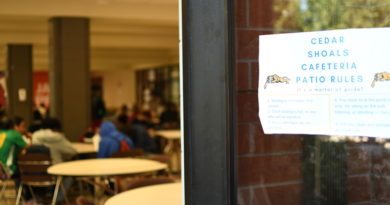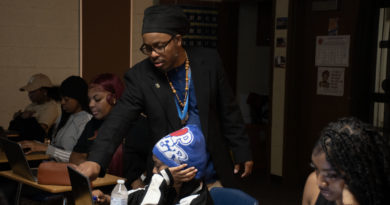Cawthon’s career in art
Since he was a kid, Cedar Shoals art teacher, Jacob Cawthon enjoyed creating art. His affinity eventually flourished into a professional career as an artist including traditional mediums like drawing, sculpting and painting as well as furniture making and now teaching.
“I started drawing when I was really little. I started illustrating fantasy books that I made up in my head,” Cawthon said.
School was always a struggle for Cawthon, as he had trouble staying focused and getting good grades. He was behind the curve in his early school years due to his dyslexia, which was not as understood at the time as it is now.
“I didn’t learn to read until way late compared to my classmates,” Cawthon said. “So my refuge was the fact that I could draw. That kept me from having completely horrible self esteem being judged too harshly by my classmates.”
After graduating with a bachelor’s degree in sculpture from the University of the Arts in Philadelphia, he began his career in Pensacola, Florida. There, he worked in a variety of different fields to save up money to open up his own art studio. However, Cawthon soon realized that for him, art had become repetitive.
“People who are making a living off of art are doing the same thing over and over again, because whatever the thing is that people like, that’s what people want to create. So they keep making it,” Cawthon said.
Another major challenge of being an individual artist that Cawthon reflects on is getting himself out there and advertising his work.
“I was never good at selling myself. I never liked doing that, it always felt so fake to me. People don’t really anticipate how much of a grind it is,” Cawthon said. “Art takes a tremendous amount of rigor, and that’s something you really have to be ready for: the amount of stuff you have to produce, the number of hours you need to spend doing it and the concentration and focus you need to have.”
Despite the challenges, Cawthon encourages students to pursue a career in art if that’s their passion and they are prepared for the obstacles.
“What I’ve always told my students who say that they want to be commissioned artists is to get a minor in business, because you’re starting a small business,” Cawthon said.
In 2004, Hurricane Ivan hit Pensacola, wiping out homes and damaging properties, including Cawthon’s studio. His studio flooded to the point where it was unusable for a while, and he ended up abandoning it. However, the flood damage was not the only reason he closed his studio.
“When people are rebuilding their houses they’re not buying art, so it pretty much killed my business. Then I had to kind of think about what else that I could do,” Cawthon said.
One of his first considerations wasteaching. Given the fluctuating income of independent artists, the steady pay of teaching was appealing and he would no longer have to juggle the responsibilities of both creating art and advertising it.
“My mother had been a kindergarten teacher for a long time, so I started looking into teaching and ended up going to graduate school,” Cawthon said.
After getting a master’s degree in art education at the University of Georgia, Cawthon taught at Madison County High School for 14 years before coming to Cedar.
“Teaching at Cedar is rewarding in that I have formed a lot of good relationships with students, and I feel like I’ve taught a lot of people a lot of things. But there’s also a lot of drama involved with teaching and a lot of emotional drain,” Cawthon said.
Cawthon says it can be difficult to motivate students to be engaged in art, realize their potential or try new things. He attributes this dynamic to students being scared of failure or embarrassment.
“It can be quite difficult to get students to try new things,” Cawthon said. “You are not going to be good at it the first time because it takes a lot of practice to be good at it.”
Recognizing these challenges, he encourages students and offers them individual feedback.
“He doesn’t just give us the work and tell us what to do, he actually helps us understand everything,” sophomore Niyah Lay said. “It’s very hands-on when he’s teaching. He really shows you how to do it.”

Cawthon’s classroom is not only a place for students to learn artistic techniques, but also expand on their creativity and open their minds to new ideas.
“For our first assignment we had to do what comes up in your head, when you see emotions and I literally drew emojis,” senior Tammy Villanueva said. “I’ve started to see myself evolve in art and understand, ‘Oh, this is an emotion I see with this.’”
Cawthon understands that only a very small percentage of students who take his class will go on to have a career in art, but he still hopes to inspire creativity in students.
“There’s nothing wrong with it being just a way to relax or decompress or separate yourself from the world for a little bit. I would be thrilled if for most of my students, that’s what they got out of my class,” Cawthon said.




